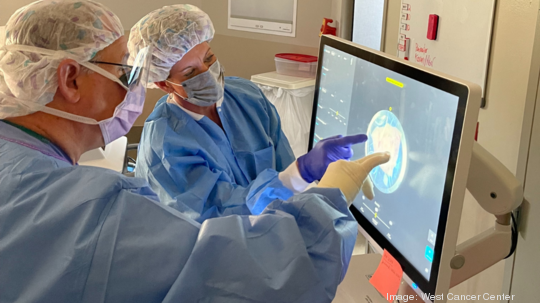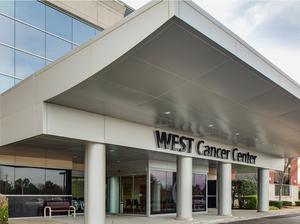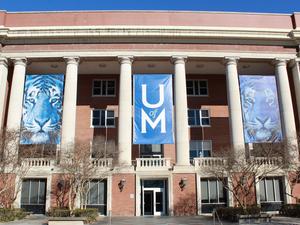
West Cancer Center became the first site to perform a patient procedure using a new imaging tool that helps surgeons get clearer margins during breast conservation surgery.
The procedure, performed in December by Dr. Richard Fine and Dr. Michael Berry, is part of a multi-center clinical trial that will test the effectiveness of an imaging device paired with artificial intelligence (AI).
The imaging device, the Perimeter B-Series OCT with ImgAssist AI, provides real-time, ultra-high-resolution images that could help surgeons identify potentially cancerous tissue and result in cleaner margins during breast lumpectomy procedures.
Doctors at West Cancer Center believe that if the device clears clinical trials, it could help make such surgery more efficient for the patient and the health care system.
“It's very promising because it's microscopic, whereas before, everything else has been very macroscopic,” Berry said.
While with some cancers, the possibility to excise extra tissue is greater, however, when dealing breast tissue, doctors have neither the luxury to extract excess tissue nor the time for a pathologist to analyze it, he said. That can often lead to a trip back to the operating room.
“Every time you take a patient in the operating room for a lumpectomy, there's a 15% to 20% chance of having to bring her all the way back to the operating room again to take more tissue out,” Berry said.
And while that doesn’t affect a patient's survival rate, it does impact the recurrence rate and can have psychological and cosmetic consequences for patients.
Apart from the trauma, he said patients get frustrated to the point where they would rather undergo complete breast removal than have additional lumpectomies.
“[Complete removal] is generally unnecessary, but their frustration level and their fear level takes over,” he said. “They'll give you one shot at it; if you're not successful the first time, they might not give you two shots at it.”
The new device gives surgeons microscopic access to all edges of breast tissue while still in the operating room, and through AI, analyze and evaluate the tissue while the surgeon continues to operate.
“If we can reduce the chance of having to take a patient back to the operating room, we do better on getting the cancer out,” Berry said. “There’s certainly less trauma that the patient has to go through an entirely separate operation, and it's less costly to the [health care] system.”
And guidance from AI supports surgeons when interpreting complex images. Having AI interpret the surgical margins and give the all-clear could be “a big success,” he said.
With quality and costs being the benchmark for the future of health care, finding something that will lower costs and keep quality the same or better, Berry said, "is the natural winning technology."
Being cautiously optimistic, he recognized the possibility, as with all clinical trials, that this technology won’t work entirely as expected. Still, as someone who has now used it, he said it looks very promising.
After the first procedure at West Cancer Center, Perimeter Medical Imaging, the device’s maker, initiated an additional clinical site at Baylor College of Medicine in Houston, Texas.
Eight total sites in the U.S. are planned for the clinical trials, with about 300 patients undergoing breast cancer conservation surgery. The trials are expected to be completed by the end of 2022.






